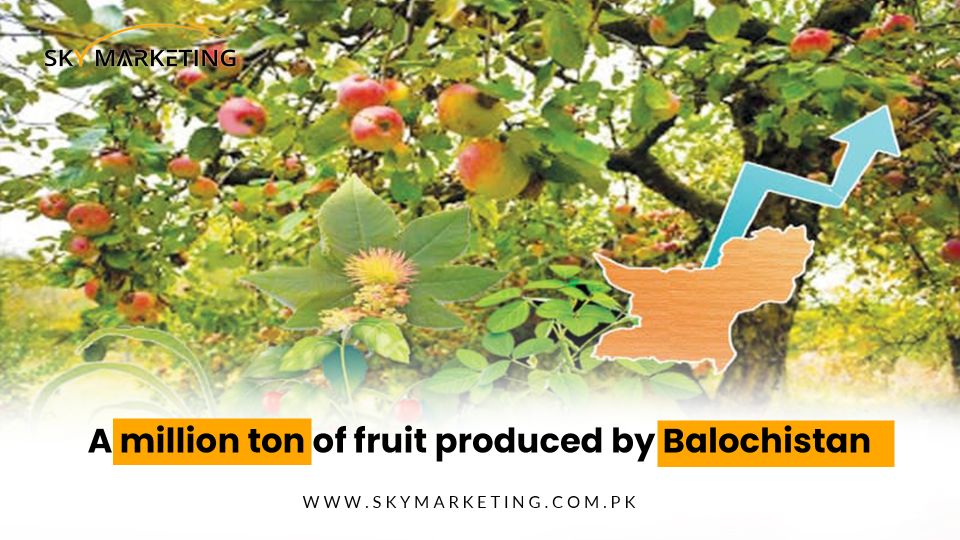How to install the app on iOS
Follow along with the video below to see how to install our site as a web app on your home screen.
Note: This feature may not be available in some browsers.
You are using an out of date browser. It may not display this or other websites correctly.
You should upgrade or use an alternative browser.
You should upgrade or use an alternative browser.
What caused overpopulation in Pakistan?
- Thread starter ThunderCat
- Start date
ThunderCat
SENIOR MEMBER

- Joined
- Jul 29, 2009
- Messages
- 3,477
- Reaction score
- -2
ThunderCat
SENIOR MEMBER

- Joined
- Jul 29, 2009
- Messages
- 3,477
- Reaction score
- -2
Human population numbers as a function of food supply: https://ia801907.us.archive.org/30/.../Human_population_numbers_as_a_function_o.pdf
ThunderCat
SENIOR MEMBER

- Joined
- Jul 29, 2009
- Messages
- 3,477
- Reaction score
- -2
Only thing not mention in this map is that most other fertile areas besides the subcontinent and a few others are only seasonally fertile:


ThunderCat
SENIOR MEMBER

- Joined
- Jul 29, 2009
- Messages
- 3,477
- Reaction score
- -2
“We have a finite environment—the planet. Anyone who thinks that you can have infinite growth in a finite environment is either a madman or an economist." -Sir David Attenborough.
I don't agree with him on the causes and solutions of overpopulation, but he hit the nail on the delusional pro-consumerist.
I don't agree with him on the causes and solutions of overpopulation, but he hit the nail on the delusional pro-consumerist.
is it anymore than rest of the world ?Too much f**king, not enough contraception caused overpopulation in Pakistan.
western China is sparsely populated
Catalystic
FULL MEMBER

- Joined
- May 17, 2022
- Messages
- 1,969
- Reaction score
- 1
- Country
- Location
Its ok we need more ummah to fight dajjal anyways
The more thr better
The more thr better
N.Siddiqui
ELITE MEMBER

- Joined
- Nov 21, 2015
- Messages
- 9,712
- Reaction score
- 13
- Country
- Location
Baluchistan is a big desert, here goes 45 percent land of Pakistan. Half of Sindh is also desert. Southern Punjab is semi desert. Gilgit Baltistan is 99 percent rugged mountainous.
This is a myth and false thing related to Balochistan.
Balochistan accounts for 70% of the total apple production of Pakistan, and most of it comes from Khad Koocha gardens. The cold weather and clean air of the area is conducive to the production of various varieties of apple. The three famous varieties found in Khad Koocha are Gaja, Torkolu, and Shin.
Where are apricots grown in Pakistan?
Apricot is grown in many parts of Pakistan including the uplands of Baluchistan Province; Parachinar, Hangu, Chitral, Swat, and Hazara Districts in Khyber Pakhtunkhwa Province; Pothwar and Murree Hills in Punjab Province; northern Kashmir; and Gilgit, Chilas, and Baltistan in Gilgit-Baltistan.
The fruit baskets of Pakistan - Daily Times
https://dailytimes.com.pk › the-fruit-baskets-of-pakistan03-Mar-2019 — Almost 60 percent of peaches, pomegranates, apricots and around 34 percent apples and 70 percent of dates are exported from Balochistan.
Why Quetta(Balochistan) is called fruit Garden of Pakistan?
Quetta is at an average elevation of 1,680 metres (5,510 feet) above sea level, making it Pakistan's only high-altitude major city. The city is known as the "Fruit Garden of Pakistan," due to the numerous fruit orchards in and around it, and the large variety of fruits and dried fruit products produced there.
Baluchistan is a big desert, here goes 45 percent land of Pakistan.
Which fruit crop is grown in Balochistan?
Balochistan is also known as Pakistan's Fruit Basket, owing to its abundance of resources. Grapes, cherries, and almonds account for 90% of national production in the province. Balochistan exports about 60% of peaches, pomegranates, apricots, around 34% of apples, and 70% of dates.13-Aug-2021

A million ton of fruit produced by Balochistan - Sky Marketing
Balochistan is also known as Pakistan’s Fruit Basket, owing to its abundance of resources. Grapes, cherries, and almonds account for 90% of national production in the province. Balochistan exports about 60% of peaches, pomegranates, apricots, around 34% of apples, and 70% of dates. Read...
Last edited:
N.Siddiqui
ELITE MEMBER

- Joined
- Nov 21, 2015
- Messages
- 9,712
- Reaction score
- 13
- Country
- Location
Baluchistan is a big desert, here goes 45 percent land of Pakistan. Half of Sindh is also desert. Southern Punjab is semi desert.
Another myth is Balochistan is desert with sand, nothing can be grown on sand.
Balochistan is an arid, mountaneous in many areas, but with fertile Soil/Mitti where all kind of crops can be grown when water is available. It is not sand in many areas but soil without water resources. And mountain areas has valleys and meadows. There are large plains also.
Fruit trees gets the moisture and water from the ground, ground water and from atmosphere unlike crops which need to be watered, so Balochistan has abundance of fruit gardens, has many climatic zones and with distinct winters and summers.
Balochistan is suitable for growing all kinds of crops including Wheat, rice, cotton, pulses, oilseed crops, and kinds of fruits including grapes, cherry and almonds, peach, pomegranate, apricot, apple, and dates.

Balochistan: grain outlook
Balochistan, where wheat harvesting is going to start next week, looks set to produce 793,000 tonnes of grains this year, up from 744,000 tonnes last year.
www.dawn.com
Last edited:
Maula Jatt
ELITE MEMBER

- Joined
- Jul 24, 2021
- Messages
- 10,697
- Reaction score
- 19
- Country
- Location
Bhai, Balochistan government ke PR department mein job pakar lien toAnother myth is Balochistan is desert with sand, nothing can be grown on sand.
Balochistan is an arid, mountaneous in many areas, but with fertile Soil/Mitti where all kind of crops can be grown when water is available. It is not sand in many areas but soil without water resources. And mountain areas has valleys and meadows. There are large plains also.
Fruit trees gets the moisture and water from the ground, ground water and from atmosphere unlike crops which need to be watered, so Balochistan has abundance of fruit gardens, has many climatic zones and with distinct winters and summers.
Balochistan is suitable for growing all kinds of crops including Wheat, rice, cotton, pulses, oilseed crops, and kinds of fruits including grapes, cherry and almonds, peach, pomegranate, apricot, apple, and dates.

Balochistan: grain outlook
Balochistan, where wheat harvesting is going to start next week, looks set to produce 793,000 tonnes of grains this year, up from 744,000 tonnes last year.www.dawn.com
Last edited:
N.Siddiqui
ELITE MEMBER

- Joined
- Nov 21, 2015
- Messages
- 9,712
- Reaction score
- 13
- Country
- Location
Bhai Balochistan government ke PR department mein job pakar le tu
Yes I can do a better job than many PR dept. people, and people in tourism department as well. Have been to Balochistan many times.
And people in Pakistan, in Punjab and Sindh don't visit Balochistan so their ambit of knowledge is limited.
Last edited:
Bilal9
ELITE MEMBER

- Joined
- Feb 4, 2014
- Messages
- 26,569
- Reaction score
- 9
- Country
- Location
Bangladesh solution to tackling overpopulation was simple.
Educate the women, give them jobs and careers and population growth literally stopped.
Girls education in villages was helped by giving parents sacks of rice for sending their girl-child to school.
Bangladesh has more girls than boys in every stage of education now, especially primary and secondary.
More women in Bangladesh have a job as a percentage of the population than those of the US. Yes you heard it right.
Since a large portion of women in Bangladesh have jobs, they don't depend on husband's income, and can decide by themselves when to have kids and how many.
This works in Bangladesh context - but may not for other countries.
Labor force participation by women is important because it indicates women's free will in deciding the time and place of becoming a mother and starting a family. Which results in a lower rate of population growth.

Educate the women, give them jobs and careers and population growth literally stopped.
Girls education in villages was helped by giving parents sacks of rice for sending their girl-child to school.
Bangladesh has more girls than boys in every stage of education now, especially primary and secondary.
More women in Bangladesh have a job as a percentage of the population than those of the US. Yes you heard it right.
Since a large portion of women in Bangladesh have jobs, they don't depend on husband's income, and can decide by themselves when to have kids and how many.
This works in Bangladesh context - but may not for other countries.
Labor force participation by women is important because it indicates women's free will in deciding the time and place of becoming a mother and starting a family. Which results in a lower rate of population growth.
ThunderCat
SENIOR MEMBER

- Joined
- Jul 29, 2009
- Messages
- 3,477
- Reaction score
- -2
western China is sparsely populated
Where did I disagree???? Where the video contradict that statement? Western China is mostly dry steppe environment. Not much vegetation there, so no surprise on the smaller populations there.
you didn't ... but the image from the youtube clip was misleadingWhere did I disagree???? Where the video contradict that statement? Western China is mostly dry steppe environment. Not much vegetation there, so no surprise on the smaller populations there.
Attachments
Similar threads
- Replies
- 24
- Views
- 741
- Replies
- 19
- Views
- 1K


